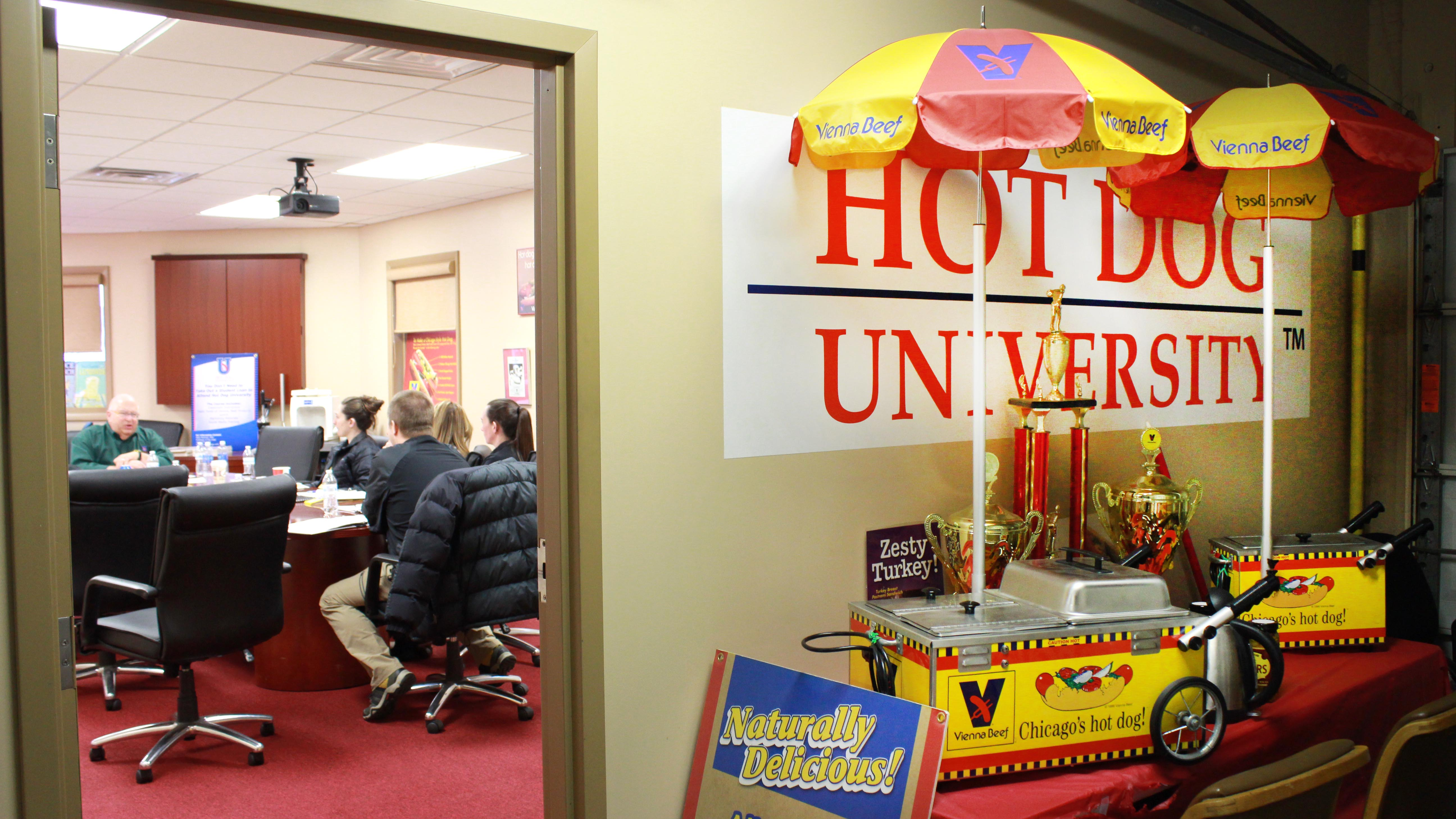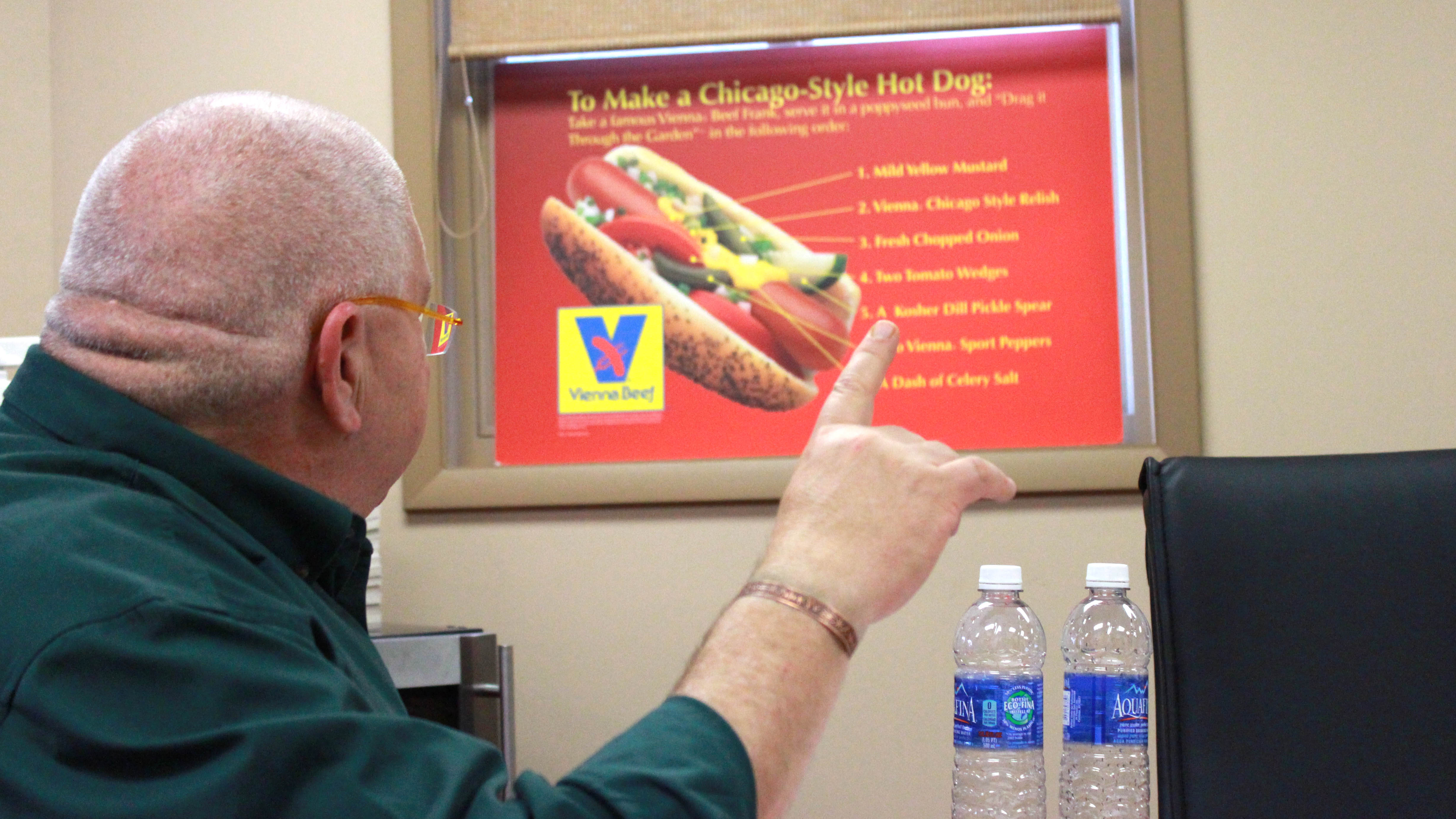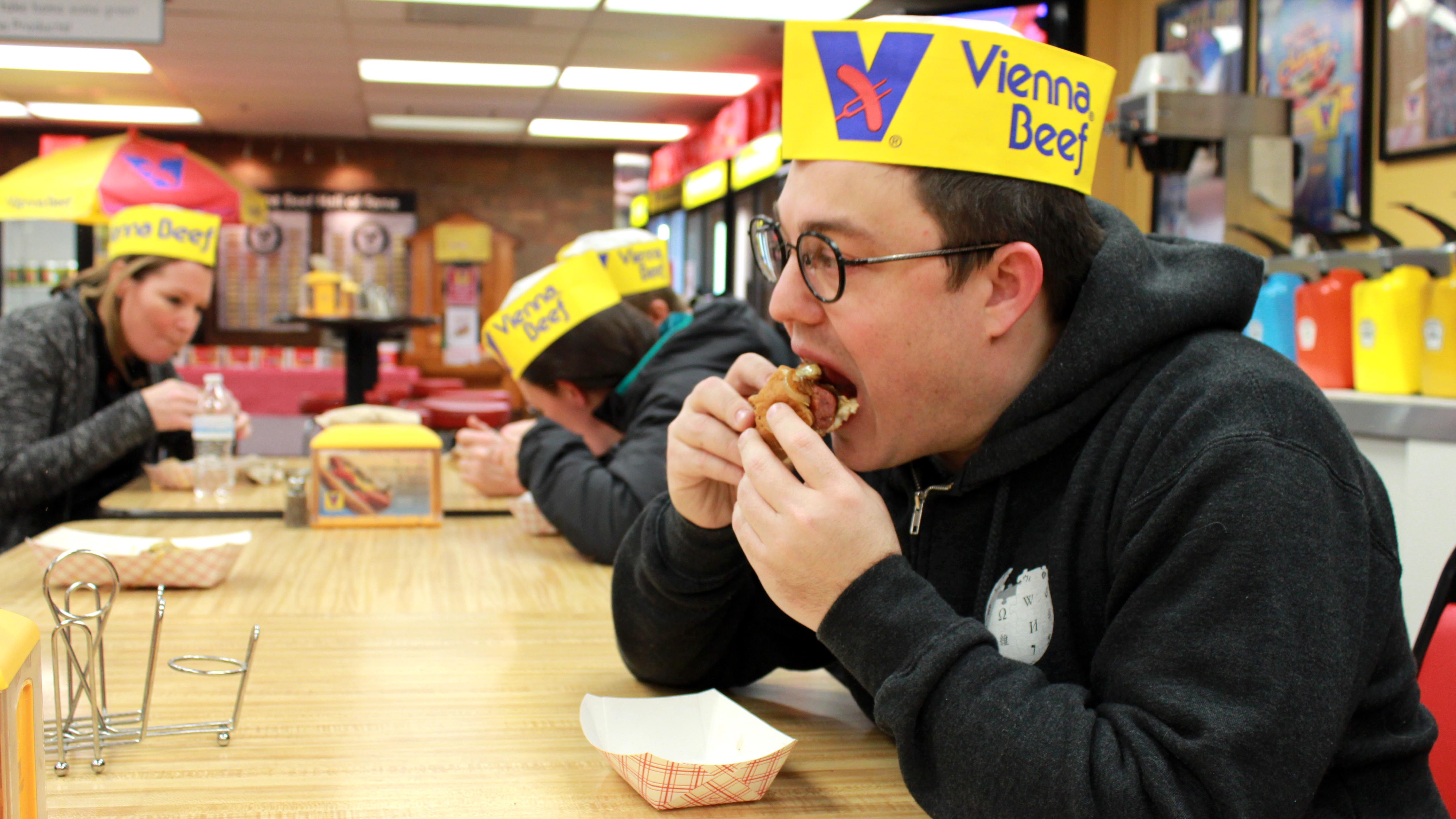I Am The First In My Family To Graduate From Hot Dog University
Editor's note: Lucky Peach was a magical food magazine that existed from 2011 to 2017. It was beloved by readers, regarded as a destination publication for writers, and won a slew of James Beard Awards. After its untimely demise, the website—and all the stories it ever published—disappeared into the digital ether. In the spirit of resurrecting the dead (and because the copyright reverts to the author), The Takeout will be republishing stories from Lucky Peach's archives—for posterity. This piece was originally published in March 2016.
I am the first from my family to graduate from Hot Dog University. It required waking up at 7 a.m. on two consecutive days. I had to journey three miles from my Chicago apartment to take this class, one that mandated consuming sausage products once every few hours. Homework was eating a salad.
Hot Dog University is a real course designed for future tube steak tycoons—to anyone interested in getting into the hot dog game (with a focus on the Chicago style). Unlike McDonald's Hamburger University or Olive Garden's Culinary Institute in Tuscany, Hot Dog University is open to the public, with zero prerequisites except maybe a tolerance for junior high dick puns. The Vienna Beef corporation, which administers the class, hopes that those who pursue a career in hot dogs will become loyal customers of the 125-year-old company.
That the cradle of wienerology resides in Chicago is not up for debate. Dating back to Depression times, the hot dog was the food of the Chicago proletariat, a meal born from scarcity. A modest serving of frankfurter and bread would get bulked up by lettuce, tomatoes, cucumbers—whatever was around and cheap—to better satiate the customer. This hot dog looked like it was assaulted by a salad, hence the phrase "dragged through the garden." Eventually, around the 1970's, the Chicago hot dog would codify into a specific, non-wavering set of components: an all-beef hot dog on a steamed poppy seed bun, dressed with mustard, diced raw onions, neon green relish, dill pickle spear, tomato slices, sport peppers, and a dash of celery salt. Any modification nulls the "Chicago-style" label void. Adding ketchup, Chicagoans like to remind you, is a seditious act punishable by 47 lashings.
It would be easy to dismiss Hot Dog University as just a funny premise, you know, let's have an ironic cap-and-gown ceremony and everyone heaves a grilled Polish skyward. But there was less comedic fodder than I thought, and this was a good thing. The $699 course, taught by a genial goofball named Mark Reitman, was surprisingly substantive on topics of business, food safety, and cooking. We (the five students in my session) didn't just sit around a conference table the entire time—we toured a restaurant supply warehouse, assembled many hot dogs from scratch, then ate our handiwork until crying uncle.
Over the two days of class I took an entire pad worth of notes, and looking through those now, many points were underscored and accompanied by exclamation points. The following made the deepest indentations on those pages.

Lesson one: On matters of size
How do you measure the size of a wiener? Indeed, there is a standard unit of measurement in the hot dog sphere: the wieners-to-pound ratio (same idea with shrimp count). Generally the smallest franks on the market are 10:1 — phonetically "ten-to-ones"—meaning ten wieners in one pound. Your supermarket franks are most likely 8:1 and six inches in length. Jumbo dogs can range from 5:1 to 3:1.
Lesson two: Rules of orderly assemblage
Of Chicago hot dog construction, the specific order of assemblage is critical to its structural integrity. Lining the hot dog first with a base of mustard ensures subsequent diced onions will better adhere to the wiener, rather than tumble loose onto your lap. Placement is also crucial: The half moons of tomato slices, round side up, tucks cozily between wiener and bun on one side, while the dill pickle spear nestles in the other.
The official Vienna Beef-sanctioned order of assemblage is thus:
1. Mild yellow mustard2. Chicago-style neon relish3. Chopped onions4. Two tomato wedges5. Kosher dill pickle spear6. Two sport peppers7. Dash of celery salt
Reitman implored: "Always dress the dog and not the bun." It's a strategy to avoid soggification, but beneath that statement there's something existentially zen, a Miyagi-esque "Don't aim the chopsticks at the fly, let the fly come to your chopsticks."
Lesson three: Color
Much of the allure of a Chicago hot dog is its visual aesthetic, which covers a spectrum of colors in a way, say, a brown Philly cheesesteak won't. Most striking of the hot dog is the relish that radiates a nuclear green glow. But what makes it seemingly neon? The answer: Blue No. 1 food dye, known as "brilliant blue."
Lesson four: Wiener freshness
Once you thaw frozen hot dogs, you have 7-10 days before it spoils. But what if there's an undated mystery pack of wieners in the fridge? Three pointers:
- The dominant smell should be a garlicky aroma.
- If you find black spots on a wiener, it means it has developed mold (except on Vienna Polish sausages, black spots are paprika).
- Swipe your fingers along the hot dog. If there's a filmy substance on the surface, it's time to throw it away.
Lesson five: “Squeeze my peppers”
Most of the Chicago hot dog's zing comes from the Mississippi sport pepper, a pinky-length, olive green chili pepper with vinegared heat and a waxy crunch. Outside a few dishes in the American South, the sport pepper—grown in Mexico—is really only found in Chicago.
Reitman offered a useful tip if your customer's heat tolerance is low, but would like to maintain the Chicago flavor profile. He called the technique "squeeze my peppers." Cut (or delicately bite) off the tip of the pepper's fat end, then squeeze over the finished hot dog to release drops of spicy brine. It's like God's version of those single-use Tabasco bottles.
Lesson six: Caramelized onions hack
A lifehack for quickly caramelizing onions: Add a generous swig of cola into the pan.
Lesson seven: Opening the bun
When the time comes to nestle in the wiener, the proper way to split the top of a steamed bun is not by opening like a book. This creates a thumb dent in the bun, and the goal is to maintain a consistent pillowed texture throughout the interior crumb. The correct technique: Poke the dominant thumb through the opening of one end, then gently slide the thumb up and down the slit until the bun naturally splits open.
Hot Dog University is a two-day course in Chicago offered through the Vienna Beef company for $699.


